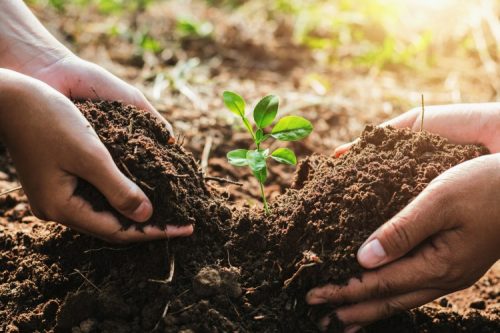
Significance of Soil in Human Life
Water covers approximately 70% of the earth’s surface, while soil covers the remaining 30%. Herein comes the significance of soil, which serves as both a food source and a place of abode. The pedosphere is the ground layer that is made up of soil and is impacted by soil formation. Soil is the primary substrata of life, serving as a reservoir of water and nutrients, as well as a filtering and decomposition medium for toxic pollutants.
This topic is one of the important questions for exams. We can see soil-related questions in biology question answer papers. Therefore, this article will give you a good understanding of the importance of soil in human life.
What is soil?
Soil is made up of various amounts of minerals, dead and live creatures (organic materials), air, and water. The four elements interact in amazing ways, making soil one of the most dynamic and vital natural resources on the planet.
45 percent mineral (soil solids), 25% air (soil pore spaces), 25% water, and 5% organic matter make up healthy soil. Knowing what kind of soil you have is only partially true. The structure of soil components has a significant impact on how they interact with one another and affect soil activities.
Composition of soil
Since the composition of soil changes from place to place, additional geographical considerations must be considered when determining what constitutes soil. To characterize the soil’s composition, we must first understand that soil refers to any loose material, and the importance of soil becomes even more apparent when we consider the many types of soil. Clay, sandy, silt, and loamy soils are all diverse types of soil with varied elements and compositions. The soil is made up of 45 percent minerals, 5 percent organic stuff, and 50 percent empty space.
Formation of soil
Soil formation occurs in a variety of ways:
- The continual action of wind and rain breaks down large boulders into smaller ones. These boulders take a long time to break down into smaller rocks.
- Physical and chemical weathering are the two basic forms of weathering that break down rocks. The parent rock is broken down into microscopic soil particles by a multitude of natural forces known as agents. Wind, water, the sun’s heat, and plants and animals are among these forces.
- The process continues when these bits are further broken down into sand and silt, and then even finer particles. This is a lengthy procedure. A single 1cm layer of soil takes thousands of years to create. The top layer of the soil is made up of very small particles.
Methods of soil conservation
The following strategies are commonly used to conserve soil:
Afforestation is the first step in the process of reforestation.
Increasing the area under forest cover is one of the most effective strategies to conserve soil. Tree cutting without discrimination should be prohibited, and efforts should be undertaken to establish trees in new locations. As the saying goes, the minimum quantity of forest area that is considered healthy for soil and water conservation for the entire country is 20 to 25%. Nonetheless, in the second five-year plan, it was increased to 33%, with the plains accounting for 20% and hilly and mountainous areas accounting for 60%.
Overgrazing Control:
The importance of grazing cannot be overstated. Overgrazing of woodlands and grasslands by animals, especially herds and flocks of sheep and goats, should be tightly regulated. Separate grazing grounds can be set aside. Alternative fodder crops should be planted in greater numbers.
Dam Construction
The construction of dams is a scientifically proven strategy for preventing soil erosion. Construction of dams across rivers may prevent soil erosion, which is exacerbated by river floods. The pace of the water may be monitored, which helps to prevent soil erosion.
Agricultural Practices in Transition
By making a few adjustments to our farming operations, we can conserve a lot of our important soil. The following is a rough outline of the situation:
Crop Rotation
It rotates crops, as the name implies. Peasants in India produce the same crop in the same field year after year. This method depletes the soil of specific components, causing it to infertile and depleted, making it unsuitable for that crop.
Strip Cropping
Crops can be grown in alternating strips parallel to one another. Some strips may be left fallow, while others may be planted with a variety of crops, such as tiny tree crops, cereals, grass legumes, and so on.
These are some soil conservation methods that we discussed. There are many other methods for soil conservation.
Importance of soil
The soil is an essential component for organisms’ survival. The development and growth of plants, which provide not only food but also life-sustaining oxygen, are supported by healthy soil. The soil supports a variety of living forms such as bacteria, algae, fungus, and others by retaining moisture and contributing to the breakdown of dead organisms. The topsoil is necessary for life since it aids in reproduction, nesting, breeding, and other activities for a few creatures.
Post a Comment
You must be logged in to post a comment.


